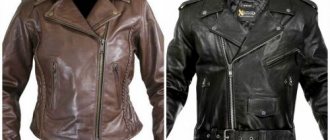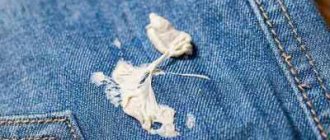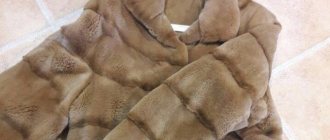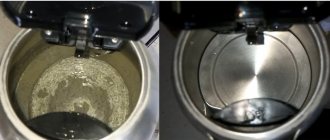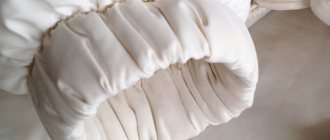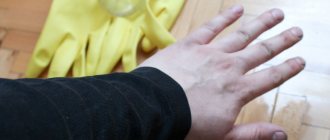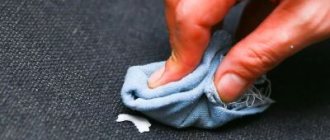There is little that can compare with a walk in a clean coniferous forest that smells of pine cones and mushrooms. And no one will be able to deny themselves the pleasure of going to a Russian bathhouse, hot and fragrant, with the aroma of a birch broom and droplets of resin emerging from the heat.
But both a walk among the pines and a good bath can lead to the same trouble, namely resin in the hair. Sticky substances getting tangled in your strands can make life very difficult. Therefore, when this problem is discovered, you need to decide how to remove the resin from the hair on your head. Fortunately, there are many ways, and everything necessary for the procedure is available in every home.
Vegetable oil
How can I remove resin? The most affordable remedy is vegetable oil, olive or sunflower. They need to generously lubricate the area with resin and rub it into the tangled hairball. After some time, it will become more pliable, the resin will gradually begin to lag behind the hairs, then it needs to be carefully combed out with a fine-toothed comb.
After the resin is removed, you need to wash your hair several times with shampoo to wash away the oil from your hair. Then rinse your hair with conditioner, which will make it easier to comb matted hair.
Method number 2. For thick hair
Thick hair looks beautiful and has a healthy appearance. But we always have to pay for beauty.
Even in childhood, people with thick hair suffered, tearing off burdocks and plasticine from them.
How to properly remove resin from such hair without depriving it of its beauty and shine? Very simple.
Frozen resin turns into a hard pebble that can be easily broken off with your fingers. Therefore, to remove the resin, you will need ice, which you will use to freeze the resin, and then remove it with your hands.
After the procedure, freeze the contaminated curl again and remove any small remaining resin with a comb. Don't forget to wash your hair after the entire procedure.
Baby cream
Vegetable oils are not the only fat-containing product that can help cope with oleoresin. How to remove resin from hair after a bath? Baby cream is perfect for this purpose. And this is the most gentle, accessible and pleasant remedy. The cream smells good, it is hypoallergenic, softens the skin if particles of oleoresin get on it and reduces irritation. It can be used by both adults and children.
Resin is removed using baby cream as follows: the product is rubbed in and then removed from the hair with a thick brush along with the resin. Repeat the required number of times, then wash off the remaining cream with soap.
How to remove resin from hair with other fat-containing products? This is done using the same method, and as analogues you can use peanut butter, mayonnaise, Vaseline, massage oil, body milk, etc.
How to wash the resin of pine and other coniferous trees from the skin of your hands
You can also use acetone or gasoline to remove tree sap from your hands. But you need to remember that in this case the cleaning procedure must be carried out in a well-ventilated area.
In addition to solvents, traditional methods are also used.
The method is absolutely safe for children and adults. Can be used for any skin type. Sunflower oil changes the consistency of the resin to a more liquid one and softens the substance. This makes the resin easier to remove from the skin.
- Apply sunflower oil generously to a cotton swab.
- Rub it into the skin for 30–40 minutes until the resin comes off.
- Wash off with hot water and soap.
It is unlikely that you will be able to wash the resin with ordinary hand washing products (soap and liquid soap). My dad really washes off the tar with regular gasoline or kerosene, and then with regular soap. Sunflower or olive oil also helps.
You can wash your hands of stuck pine resin with regular vegetable oil.
"Coca Cola"
Coca-Cola is a very useful drink in the household. You can drink it, clean the bathtub from rust, and rid the kettle of limescale. The activity of the drink is explained by its composition: Coca-Cola contains carbon dioxide and phosphoric acid (which, by the way, causes thirst, which makes it almost impossible to get drunk with cola). These same components are also found in other sweet sodas, such as Fanta or Sprite.
And they are the ones who will help get rid of the resin in your hair. How to remove tar from hair using cola? To do this you need to prepare a solution: 0.5 l. soda for ½ tbsp. l. baking soda. Stir and dip the damaged strand into the solution for 10 minutes. Rinse hair thoroughly with shampoo.
How to remove resin from hair
Ask your family to help you. If the resin gets on the ends of your hair, then simply cut off this part of the hair with scissors. If cutting your locks ruins your hairstyle, try the following methods.
For thin hair, comb out the resin using a plastic comb. Pre-lubricate the hairs around the stuck resin with vegetable oil. Another safe method is removal with soda. Dissolve 2 tbsp. l. baking soda in 300 ml hot water. Rinse the contaminated strands with the resulting solution. Do this procedure several times.
We invite you to read: Kalanchoe cultivation and care at home
The resin is easily removed if it is frozen. Cover the resin with ice cubes. After it freezes, crumble it with your fingers and remove. Heat can also be used to remove resin. To do this, use a hair dryer with a comb attachment. Heat the strand stained with resin and wipe it with a dry cloth. When you have removed most of the sticky mass, comb your strands with a hot brush. Clean the resin off it periodically.
Turpentine
The next method for removing resin from scalp hair is based on the use of turpentine. You just need to purchase special purified gum turpentine, which, unlike its technical counterpart, does not cause burns, irritation or redness on the skin. At the same time, it softens the resin well.
The recipe is as follows: 2 tbsp. l. dilute starch with 8 drops of highly purified turpentine and add 6 drops of ammonia. The resulting mixture is applied to the problem area, the resin is softened and combed out of the hair. Then the curls should be thoroughly washed with shampoo.
What not to do if resin gets on your head
Many people, having discovered tar on their head or their child’s head, immediately run to the bathroom and start washing their hair. As a result, the resin spreads throughout the hair, into which soap or shampoo is also woven, acting as a fixative on the resin. It is very difficult to remove such pollution.
Initially, you need to assess the extent of the damage, separate problem areas, and study what products you have at home to remove the resin (soda, lemon, mayonnaise, etc.).
Gentle products that do not contain chemicals are used for children.
Acetone
What else can you do to remove pine resin from hair? Acetone and substances containing it can deal well with sticky substances. For example, nail polish remover. The procedure for working with acetone is as follows:
- Go to a well-ventilated area.
- Apply a little solvent to a cotton pad.
- Apply to the resin for a maximum of 5 seconds.
- Clean off the resin with the same disc.
- Rinse your hair well with plenty of shampoo.
Acetone should not be used when removing resin from the hair of children or people with high sensitivity to solvents. Also, this method cannot be used by those who have diseases of the respiratory system. It is strictly forbidden to open the solvent in enclosed spaces, as its fumes are toxic.
You can also find solvents for epoxy resin in stores - DMSO and DMF. Both will work well with tree resin, but you absolutely cannot use them to cleanse your hair and body! They are extremely dangerous and toxic.
In addition, you cannot use SP-6 remover or any acid other than citric acid. These substances cause severe chemical burns!
Features of cleansing different types of curls
When choosing a product, it is important to consider the condition of the hair. Not only the effectiveness, but also the safety of a particular method will depend on the structure and density:
For sparse and thin hair, vegetable oil or any fat-containing product is better.
This could be mayonnaise, Vaseline, fatty baby cream. Apply generously to the problem area and cover with cellophane or film for 30-40 minutes. Then comb the strand, simultaneously removing soft resin lumps.- For thick combination hair, the method given above may not be effective enough. In this case, you should resort to the ice cooling method. This will take a lot of time, but will have minimal traumatic effect.
- For oily hair, you can use alcohol, acetone, nail polish remover, and other acceptable solvents. However, before using this method, it is worth trying a more gentle method.
For sparse and oily hair, you can use the hot blowing method. For thick ones, it will be more troublesome, since it will take a long time to comb out the softened resin.
After using a hot hairdryer or solvents, shampooing should be completed by applying a balm and/or moisturizing mask.
Lemon acid
How to remove resin from hair using citric acid? It is the same chemical solvent, only softer and safer. In order to get rid of tree sap you need:
- Take a sponge and moisten it with warm water.
- Pour citric acid onto a sponge.
- Wipe the resin from your hair.
- Rinse with warm water, rinse hair with shampoo.
Instead of citric acid powder and water, you can use natural lemon juice - apply it to a cotton pad and wipe off the sticky substance.
This substance is not recommended for use on areas close to the skin as it may cause irritation. If there is damage to the skin, then it is better to use another product.
The nuances of removing various types of resins
Wood resin is much easier to remove than synthetic resin. By its nature, it is softer and contains substances such as alcohols, acids and oils. The use of compositions based on similar components (ethanol, turpentine, other solvents) allows you to effectively remove the resin ball without much effort.
Epoxy resins contain hardeners . This makes most of them resistant to weak acids and alkalis. Therefore, it is recommended to remove the resin from the hair within several hours, until it has completely hardened.
Alcohol
The next method to remove resin from hair is to use regular alcohol. Strong alcohol makes the resin soft and viscous, and it is easy to clean it off with a cloth or cotton pad. But vodka is not suitable for these purposes, since it contains insufficient concentration of pure alcohol. Therefore, you need to purchase regular 95% medical alcohol. And since it is now sold only by prescription, you can arm yourself with its analogue - formic alcohol. Or buy an old-style men's cologne - “Chypre” or “Russian Forest”. They are still found in stores.
Alcohol is good because it softens the resin, and at the same time it quickly evaporates from the surface of the hair. At the same time, it is safe for use: both for adults and for children.
If the curls are sparse
It is somewhat easier for owners of thin hair than for owners of thick hair, because they can simply comb out the resin. This method is good for small areas of contamination.
First, clean hair is separated and curled to keep it out of the way. Next, take a fine-toothed comb and begin combing a small area from the ends. It is from the ends, and not from the roots, because this will cause the “nest” to itch, which will only have to be trimmed.
To make the task easier, it’s a good idea to lightly lubricate the teeth of the comb with sunflower oil. Afterwards, wash your hair with shampoo.
Alternatively, coat the entire area with oil and comb out.
Cold and heat
How to remove tree resin from hair using heat or cold? The action of this technique is based on the fact that when cooled, the resin becomes hard and easily crumbles, and when heated, it flows like water and can be easily removed with a cotton swab or towel. However, in reality this is quite difficult to achieve.
In order to get rid of the sticky substance, it is often suggested to use an iron: transfer the soiled strand between layers of clean fabric and iron it well. This way the resin will spread and be absorbed. The method looks quite dangerous, since you will have to use a heavy and hot object near your face. People with short hair, in principle, will not be able to use this method.
It is also difficult to remove the resin using cold: in order for the resin to harden, it must be placed in the freezer. If you try to cool it with pieces of ice, it will never harden to such a state that it crumbles easily and does not leave marks.
So in theory, both methods are good, and they work quite well when it comes to removing tar from clothes. But with hair it is better to use some other product.
How to remove resin from hair when there is a lot of it
To do this, use one of the solvents.
- The resin dissolves in pure alcohol. Vodka will not work for dissolution.
- Gasoline and kerosene also remove tar well. It is safer to use gasoline, which is used to refill lighters.
- Acetone or nail polish remover is also effective at dissolving hardened resin.
We suggest you familiarize yourself with the best way to remove glue from mice
However, these solvents are harmful to the hair. To minimize it, apply the product to a cotton pad and use it to dissolve the resin. When removing these products, do not spray them all over your hair and skin.
Resin in hair: preparatory work
First of all, separate the stuck hair and place the strand on the cellophane film. This will prevent the remaining hairs from sticking together.
There are several simple ways to remove resin from your hair.
To remove resin from hair, prepare:
- scissors;
- hair dryer;
- plastic combs with sparse teeth;
- vegetable oil;
- ice;
- baking soda;
- chemical solvent: alcohol, acetone, kerosene, etc.
Shampoo and nourishing conditioner will remove any solvent remaining on the hair. You probably won't need all the funds. However, if there is a lot of resin on your curls, try several methods.
Epilation with resin
Phytoresin is a special substance made from a mixture of pine resin, natural honey and ground nuts. Hair removal resin can be purchased in specialized stores or ordered online. Before epilation with resin, make sure that you are not allergic to any of the components of this substance. Apply the resin to a small area of skin, wait and check for irritation.
For hair removal you will need strips of cotton fabric. Heat the resin in a water bath until liquid. Using a wooden spatula, apply this product to the desired area of the body. Attach a strip of fabric to the resin so that a tip up to 10 cm long remains at the bottom. You will pull by it. Use your palm to smooth the fabric, and then pull off the strip with a sharp movement.
You need to drag despite the hair growth. Phytos resin has a number of properties suitable for the skin. It expands the pores and makes the process of removing excess hair less painful. Epilation with resin has the function of peeling, in that keratinized particles are removed from the top layer of skin. The occurrence of ingrown hairs, irritation and red spots after this procedure is less likely than after removing excess hair with wax.
Waxing
Hair removal wax can be purchased at most cosmetic stores. You will also need strips of thick paper and medications to relieve skin irritation. Hairs about 5 mm long are best removed with wax; therefore, the area of the body being treated must be shaved 3-5 days before the procedure.
Before hair removal, the skin must be thoroughly washed and dry. After waxing, it is not recommended to visit the bathhouse and sauna for 1-2 days, sunbathe or apply any cosmetics to the skin. The wax must be heated to 40 degrees, and it must be of a consistent consistency liquid honey. Apply this substance to the skin with a wooden spatula in the direction of hair growth. Press the prepared strip of paper on top.
Wait a couple of minutes. The wax will begin to harden. At this point, pull the strip firmly against the direction of hair growth. With your left hand, lightly stretch the skin in the place where you begin to remove the strip of paper. Remaining wax can be removed with a cotton swab dipped in vegetable oil. Skin irritation, which occasionally occurs after waxing, can be relieved by wiping the injured areas with camphor oil.
Absolutely, it is quite problematic to get dirty with pine resin or, as it is also called, resin. This is only acceptable when walking through a park or forest, installing a New Year's tree during the holidays, or working at a construction site. But even if you get dirty, there is nothing terrible about it, you don’t have to throw away your clothes, you can absolutely clean them.
You will need
- – gasoline;
- – acetone;
- – white soap;
- - starch;
- – turpentine;
- – ammonia;
- - hydrogen peroxide;
- - alcohol;
- - vegetable oil.
Features of cleaning a child's skin and hair
Kids often get dirty while walking. They love to collect cones and branches of coniferous trees. This is how an odorous viscous liquid appears on their hands and clothes.
It is useless to wash off resin from children's skin with water: the substance will only harden faster and adhere better.
Then it will be almost impossible to clean up the contamination. Water is effective only when the remaining substances are completely washed away.
You can leave everything as is. Little by little, the tar stains will disappear on their own. But such a process will take a lot of time. The resin comes off much faster after treating the baby's hands with baby cream. It is optimal to take the fattest product.
Instructions:
Neither alcohol, nor acetone, nor white spirit can be used to remove any type of resin from a child’s skin.
. The substances are harmful to children's health. Only natural products are used. The best of them is vegetable oil.
Apply baby oil or any natural oil to the stain.
If the baby is very dirty in spruce resin, then you can clean the stains with citric acid or fresh lemon juice. However, it is more effective to combine the action of acid and water, using the method when washing a tomboy. This action will take a lot of time. Half an hour minimum, if the baby has had enough time to cuddle with trees during a walk and has collected enough oleoresin “in reserve.”
It is not easy to remove resin from hair. The best option is still a haircut. Alternatively, combing the locks with oil is acceptable. With the help of ice, it is possible to “freeze” the resin and remove it from the hair. But the method is painful.
It is acceptable to use ice to remove tar marks from the skin, but this method can cause a cold. You can use ice to remove tar from your hands, but not from your child’s back, belly, or legs.
Remove resin from clothes or shoes
Resin stuck to clothes is no less troublesome than resin stuck to hair. And you need to get rid of it no less carefully, especially if the item is dear to you. To prevent the cleaning procedure from causing damage to your items, we recommend considering the following cleaning methods.
- Cleaning with ethyl alcohol. It is best to let the resin dry; to do this, place the clothes in a room on the shady side for several hours. After the resin has hardened, scrape off the main part of it with your fingers, and wipe the remainder with a rag moistened with alcohol.
- Ironing. This method is similar to the described method for removing resin stuck in hair using a hair dryer. Place unnecessary rags or paper napkins on the ironing board. After this, place the soiled clothing face down on it, and cover it with gauze on top. By smoothing the contaminated part, you melt the resin, which begins to be absorbed into the placed napkin. After the procedure, you need to wash your clothes with powder.
We suggest you familiarize yourself with How to wash powder in a washing machine tray
Mechanical methods
Large pieces of soft resin are removed with a plastic scraper or other object that you don’t mind throwing away after the procedure. To avoid getting dirty, put gloves on your hands or wrap them in plastic.
A more dangerous method is to use a razor, little by little breaking off pieces of the frozen mass. Extreme caution is required here to avoid serious injury.
https://www.youtube.com/watch?v=zGvNxw4RJhE
The resin is removed with a razor.
You can get rid of the resin after it has set. You will have to spend time and put in a lot of effort, but good results are achievable. Ice will help with this:
A similar method: cover the stain with any oil or fat. It will soften the resin, making it easier to remove from the skin.
. It is acceptable to use vegetable oils, baby oils, and tanning products. The cream works in a similar way.
You can remove resin using cream in the following way:
Mechanical methods of rubbing off hardened resin are dangerous. Cream and oil are the most gentle means
. You can also use the oil in the following ways:
